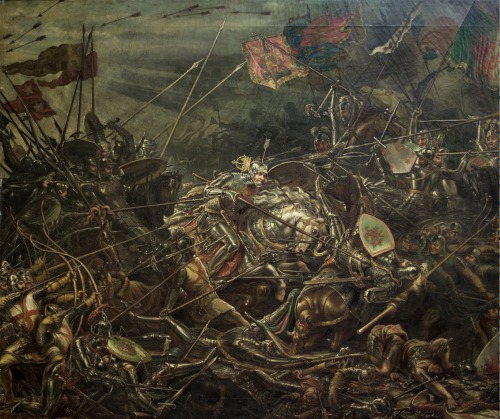A Real Game of ThronesThe Wars of the Roses Part IV — The Final BattleIn case you missed: Part
A Real Game of ThronesThe Wars of the Roses Part IV — The Final BattleIn case you missed: Part I, Part II, Part IIIRichard III had been successful in inheriting the throne from his older brother Edward IV despite Edward declaring that his sons would become heirs. In an audacious yet deceitful move, Richard had Edward’s two sons declared illegitimate and imprisoned in the the Tower of London. Although it is only rumor, supposedly Richard had the two brothers murdered in the night, so that Edward’s bloodline could be extinguished forever.When Richard III became king, England was rife with political turmoil. Richard III’s taking of the throne only brought this turmoil to a boiling point. Many of Edward IV’s supporters believed Richard to be an usurper. Richard cast himself as a man of the people, quickly instituting liberal reforms that benefited the people, including an end on the restrictions of printing books, special courts where the poor could attain free legal services, land reforms, and new legal protections for peasants. While the English commoner benefited from his rule, many of his nobles, whom he depended for support, saw his reforms as radical and extreme. Many felt their positions of power and wealth were threatened by his decrees.In 1483, within months of taking the throne, the kingdom fell into rebellion as many former supporters of Edward IV and disgruntled gentry rose up against Richard. The country quickly fell into chaos. Seeing an advantage in Richard’s weakness, the mother of Henry Tudor sent word to her son that now was the time to strike. Henry Tudor was the last surviving male heir of the House of Lancaster. Having fled after all other Lancastrians were executed, Henry lived in exile in Northern France, waiting for the right time to return. In 1485 Henry Tudor landed in Wales with an army of 5,000, composed mostly of French mercenaries and English rebels, as well as some Scots. On the march to London, they also recruited a number of Welsh volunteers. Henry Tudor was met at Bosworth Field (Central England) by Richards army, composed of 10,000 English troops. Richard III’s men held the high ground, perched atop Albion Hill. Off to the side of the battle were 6,000 men under the command of the Thomas Stanley, 2nd Duke of Stanley. Stanley brought his army to the battlefield, but chose to remain neutral. To both sides, convincing Stanly to enter the fight could serve as the deciding factor in the battle.On August 22nd, 1483 both armies charged each other. Despite being outnumbered 2 to 1 the army of Henry Tudor managed to hold its ground against Richards large army. While Richard had superior numbers, Henry’s army was composed of French mercenaries who were considered the most skilled and battle hardened soldiers in all of Europe. Slowly the battle turned against Richard. Recognizing this Richard signaled for reinforcements under the command of Henry Percy, the Earl of Northumberland. Northumberland’s reinforcements never came. It is unknown whether Northumberland was unable or unwilling to aid his king.The Battle of Bosworth Field was going badly for Richard III, but in a brief moment he thought he saw Henry Tudor ride of in direction of Stanley, perhaps to gain his support. In an attempt to end the battle in his favor, Richard dashed off with his bodyguard to try and kill Henry Tudor. This turned out to be a terrible move as Henry’s bodyguard kept him away from Richard. In the end Richard found himself surrounded by a regiment of Welsh pikemen. Richard III fought bravely and viciously to the last, until he was run through with a halberd.After the battle Henry Tudor was immediately crowned King of England. Richard III’s body was stripped naked and displayed at Leicester, then buried in an unmarked grave. In 2012 a battle damaged skeleton was uncovered under a parking lot in Leicester. Months later DNA testing confirmed that it belonged to Richard III. As for Henry Tudor, he became Henry VII. Rather than lopping the heads of his former enemies, he granted general amnesty to anyone and everyone who swore fealty to him. To seal the rift between the House of Lancaster and the House of York, he married Elizabeth of York. In doing so he formed a new dynasty, one that was neither York, Lancastrian, or Platagenet, but one that was fully Tudor. The new House of Tudor adopted the Tudor Rose as its symbol, which combine the White Rose of York and the Red Rose of Lancaster.The new Tudor Dynasty would become one of the most famous royal dynasties in English history, comprised of famous monarchs such as Henry VIII, Mary I aka “Bloody Mary”, and Elizabeth I. -- source link
Tumblr Blog : peashooter85.tumblr.com
#history#henry tudor#english history#richard iii#henry vii

